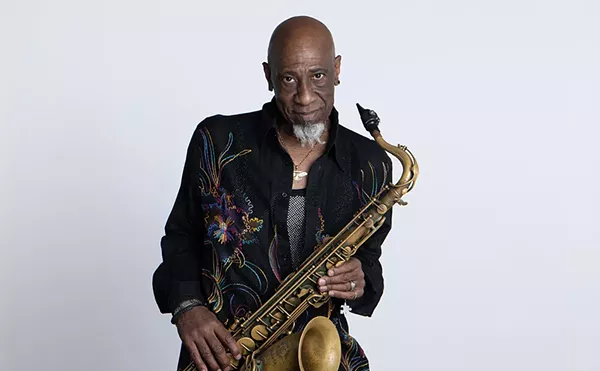
Audio By Carbonatix
[
{
"name": "GPT - Leaderboard - Inline - Content",
"component": "35519556",
"insertPoint": "5th",
"startingPoint": "3",
"requiredCountToDisplay": "3",
"maxInsertions": 100,
"adList": [
{
"adPreset": "LeaderboardInline"
}
]
}
]
The relatively lengthy running time of Going the Distance, a romantic comedy starring Drew Barrymore and her real-life boyfriend Justin Long, coupled with its wearily predictable ending, gives viewers plenty of time to think about the relentless demands of commercial moviemaking. In this case, gifted documentary filmmaker Nanette Burstein — whose portraits of young boxers (On the Ropes) and high-school students (American Teen) are noteworthy for their emotional realism — is given the difficult task of making something new and different from the formulaic story of a couple trying to make a long-distance relationship work.
With first-time screenwriter Geoff LaTulippe, Burstein tries mightily to bring some believability to the story — witty, improvisational-style dialogue, an acknowledgement of the sagging recessionary job market — only to be largely defeated by the necessary clichés of the Hollywood rom com.
One necessary evil is the casting. Barrymore, never quite as talented or charming as her family legacy implies, looks a bit haggard for the ingénue role she's playing, and Long has a long way to go before being considered leading-man material. And despite being a real-life couple, Barrymore and Long generate little charisma or erotic heat.
Barrymore plays Erin, a clever 31-year-old graduate student and intern at a New York newspaper. She meets Garrett (Long), an indie record-company employee freshly dumped by his girlfriend, and they bond over shared interests in 1980s music and vintage arcade video games. Their budding romance is propelled with some help from a montage of citywide cavorting, in which Burstein resurrects split-screen techniques that hark back to 1959's fluffy Pillow Talk. Six weeks into this romantic idyll, Erin must return to California to finish school (Stanford, no less), leaving Garrett to his goofy pals Dan (Charlie Day) and Box (Jason Sudeikis) and his unrealistic music-industry job.
Another necessary evil is plot mechanics, which require a labored explanation of the challenges facing Erin and Garrett during their separation — spelled out with frequent phone calls, texts, shared guffaws over a sneezing panda on YouTube, jealousy, comically failed phone sex and occasional sex-charged reunions. Since the couple is less interesting than the supporting characters — the funny Sudeikis and Day, plus lovely Christina Applegate as Erin's sister, who's saddled with the sole unfunny trait of being a hygiene freak — our emotional investment in Erin and Garrett is limited.
The relationship reaches a crisis point when Erin, attempting the quixotic feat of obtaining a full-time job as a newspaper reporter, receives an offer that will keep her on the West Coast, leaving Garrett to sulk petulantly in his dumpy Manhattan apartment and consider seeking solace with a pretty co-worker (Kelli Garner). But Burstein and LaTulippe's efforts to bring realism to the rom com is again subverted: with one hand, the movie acknowledges that newspapers are going the way of the buggy whip; with the other, it performs a bit of movie magic as dated as the music the couple enjoys.
Overlong and meandering, Going the Distance has trouble maintaining a consistent tone. Sincere scenes reside uncomfortably beside slapstick sequences (Garrett dodging wild spray at a fake-tan salon, Erin and Garrett caught screwing on her sister's dining-room table). Still, even with all its problems, the movie has some appeal. The jokey, sub-Judd Apatow banter, unusually frank sexual dialogue (like feisty Erin lamenting the problems of men dawdling when they perform oral sex), strong supporting cast, and general amiability liberate it somewhat from its genre-dictated confines.
Pamela Zoslov writes about film for the Cleveland Scene, in which this review originally appeared.





